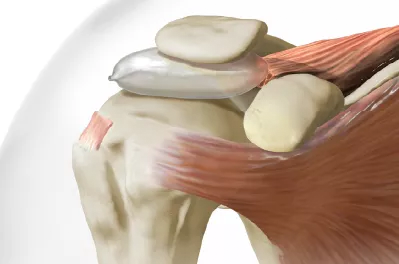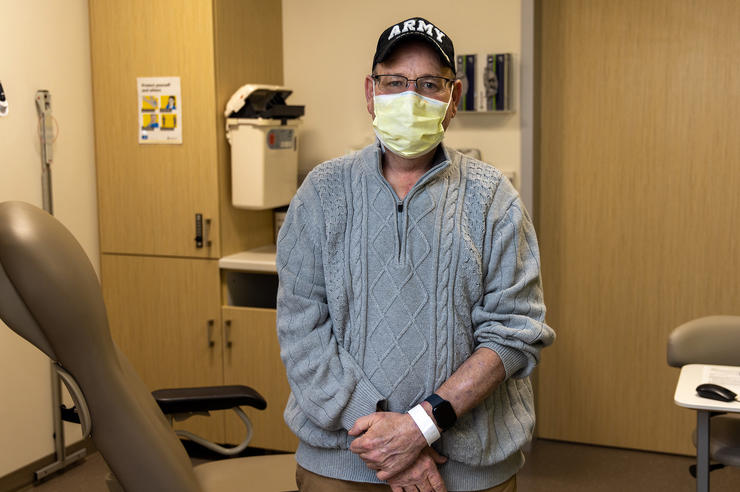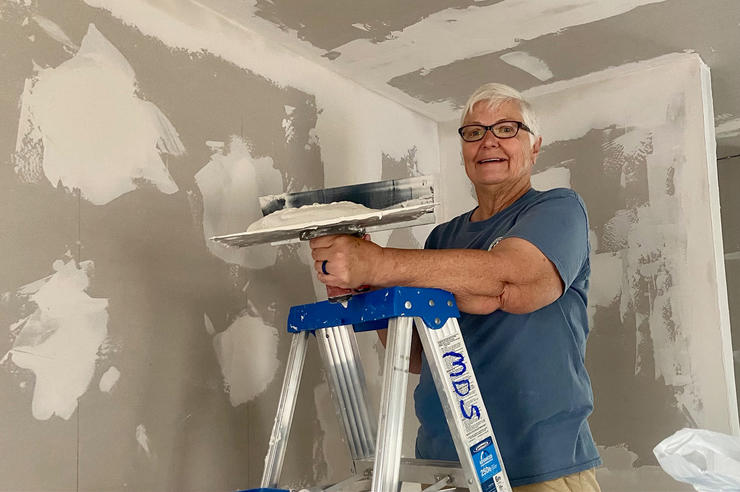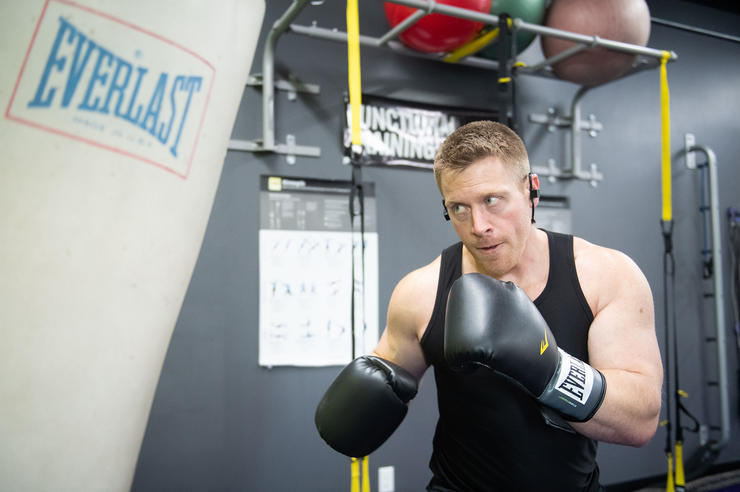The first in Iowa to offer new shoulder care option

Jeff Six, of Fairfield, Iowa, went through the InSpace subacromial spacer implant procedure after suffering a shoulder injury. “After the procedure, my quality of life instantly got better,” says Six, who plays trumpet in an Armed Forces band. “My flexibility and mobility is much better. I can work again, and I don’t hurt. I have no pain.”
You may be familiar with the term “rotator cuff” from sportscasters describing a specific type of shoulder injury to a professional athlete.
In fact, it is one of the most common causes of shoulder pain and disability among all adults. Each year, approximately 2 million Americans seek medical help for rotator cuff tears, according to the American Academy of Orthopedic Surgeons.
With a rotator cuff tear, any activity that involves raising or rotating the arm can be difficult and extremely painful. Rest and physical therapy are the standard treatments, and in some cases, surgery may be necessary.
For patients with a massive rotator cuff tear, a new arthroscopic implant procedure now available from University of Iowa Sports Medicine may help reduce shoulder pain, improve function, and speed up recovery.
First in Iowa to use subacromial spacer
UI orthopedic surgeon Matthew Bollier, MD, is the first in Iowa to use the InSpace subacromial spacer, which received Food and Drug Administration approval in September 2021. It is a biodegradable balloon implant that is inserted into the shoulder above the rotator cuff and “blown up” with saline.

The new InSpace balloon implant restores the subacromial space and helps center the humeral head (the ball in the ball-and-socket joint), providing pain relief and improved shoulder function.
The spacer can be used in one of two ways: to help protect a massive rotator cuff repair or to stabilize the shoulder’s ball-and-socket joint in patients whose rotator cuff cannot be fixed.
“Patients with massive rotator cuff tears don’t have a lot of easy treatment options,” Bollier says. “The subacromial spacer gives us another option. It’s easy to do, the rehab is relatively quick and easy, and it can make a huge difference in a patient’s shoulder pain and mobility.”
What is a rotator cuff tear?
Your shoulder is made up of three bones: the upper arm bone (humerus), shoulder blade (scapula), and collarbone (clavicle). Your shoulder works as a ball-and-socket joint—the ball, or head, of the upper arm bone fits into a socket in the shoulder blade.
Your arm is kept in the shoulder socket by the rotator cuff, which is a group of four muscles that come together as tendons to form a covering around the ball of the upper arm bone. There is also a lubricating sac (known as a bursa) between the rotator cuff and the bone on the top of the shoulder. The bursa allows the rotator cuff tendons to move smoothly when you use your arm. With a rotator cuff injury, the bursa can become inflamed and painful.
When one or more of the rotator cuff tendons is torn, the tendon becomes partially or completely detached from the ball in the ball-and-socket joint.
Subacromial spacer helps lessen pain, speed up recovery
The subacromial space refers to the area above the shoulder’s ball-and-socket joint and below the acromion, the uppermost bone of the shoulder. The rotator cuff and bursa are in the subacromial space.
The new InSpace balloon implant restores the subacromial space and helps center the humeral head (the ball in the ball-and-socket joint), providing pain relief and improved shoulder function.
Whether it is used in conjunction with rotator cuff repair surgery or as a standalone treatment for patients who are not candidates for rotator cuff surgery, the minimally invasive subacromial spacer procedure can help shorten a patient’s rehab, notes Bollier, who also serves as a team physician for the Iowa Hawkeyes.
“With the balloon, we’re able to start physical therapy right away,” says Bollier, who has used the InSpace subacromial spacer in more than 40 patients since the technology was approved by the FDA. “Patients experience less pain, which helps speed up the recovery process.”

“I feel so much better”
Jeff Six, of Fairfield, Iowa, has done a lot of physical work in his many roles. He’s been in the Army for just shy of four decades; he’s worked in an engineering job and as a firefighter nearly as long; and he enjoys being outdoors doing landscaping and lawn care work. That adds up to a fair amount of wear and tear on the shoulders and back.
Six injured his left shoulder while doing push-ups. “I was on my third or fourth set, and on the way up, I heard it rip,” he says. The injury kept Six from doing many of the things he enjoyed—it even affected his ability to play “Taps” in the Army band or lift a flag from a casket.
He underwent the InSpace subacromial spacer implant procedure at UI Hospitals & Clinics to repair his shoulder. The recovery process was smooth, and soon Six was able to resume many of his favorite activities.
“After the procedure, my quality of life instantly got better,” says Six, who is riding his motorcycle with confidence, swinging a golf club with no issue, and playing “Taps” at his regular horn position. “My flexibility and mobility is much better. I can work again, and I don’t hurt. I have no pain. It’s awesome—I feel so much better.”


